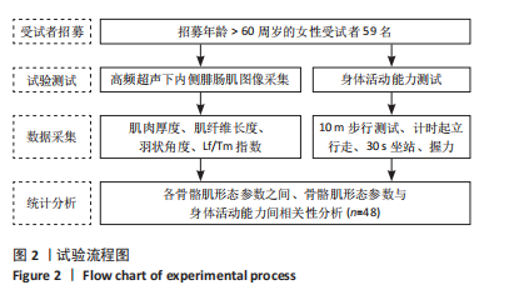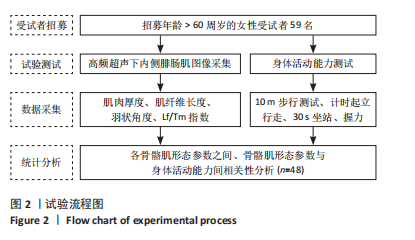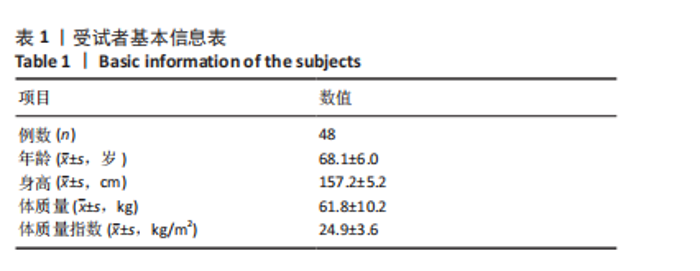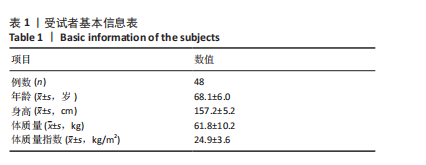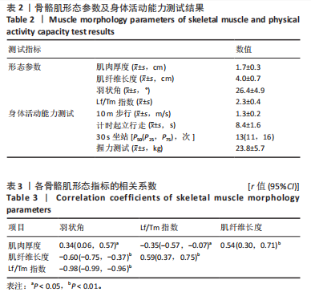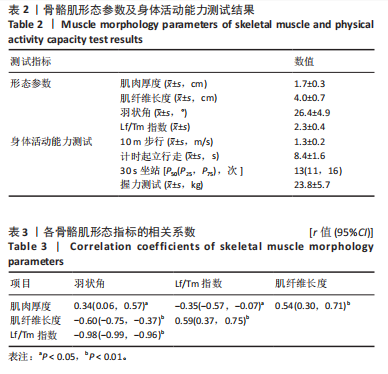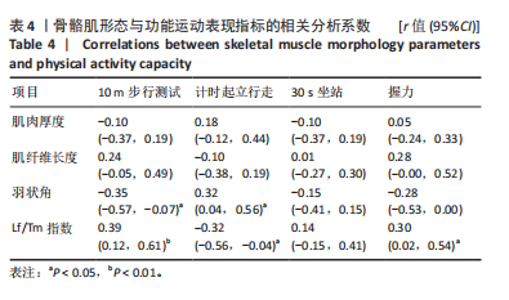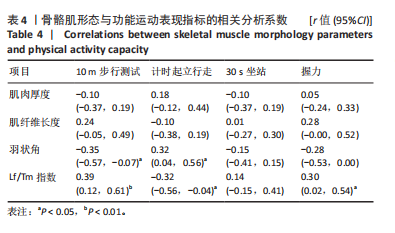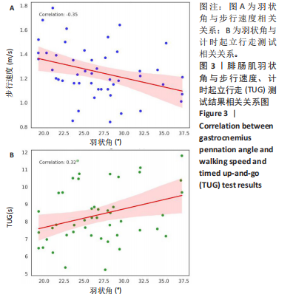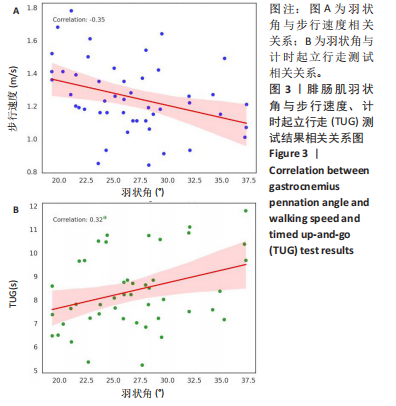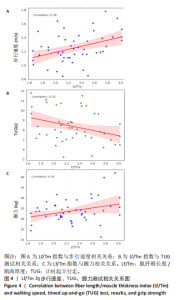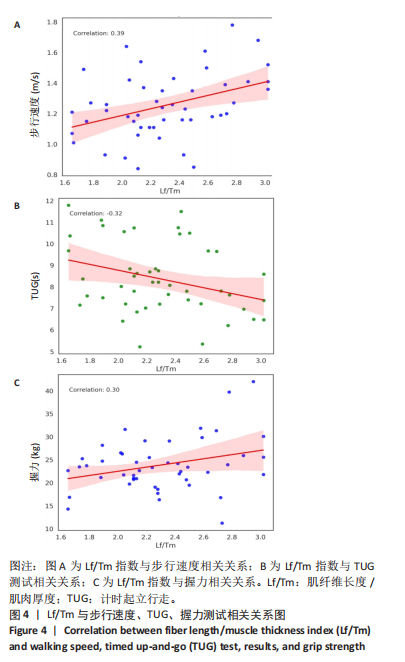[1] ANDERSON FC, PANDY MG. Individual muscle contributions to support in normal walking. Gait Posture. 2003;17(2):159-169.
[2] LENHART RL, FRANCIS CA, LENZ AL, et al. Empirical evaluation of gastrocnemius and soleus function during walking. J Biomech. 2014; 47(12):2969-2974.
[3] PANG J, WU M, LIU X, et al. Age-Related Changes in Shear Wave Elastography Parameters of the Gastrocnemius Muscle in Association with Physical Performance in Healthy Adults. Gerontology. 2021;67(3): 306-313.
[4] ZIEGL A, HAYN D, KASTNER P, et al. Quantification of the Link between Timed Up-and-Go Test Subtasks and Contractile Muscle Properties.Sensors (Basel). 2021;21(19):6539.
[5] KIM N, PARK J, SHIN H, et al. Gastrocnemius Medial Head Stiffness Is Associated with Potential Fall Risk in Community-Dwelling Older Adults.Healthcare (Basel). 2022;10(5):785.
[6] MACEDO FRAIZ G, HERMINIA GALLO L, IRACI RABITO E, et al. Relationship between muscle thickness and calf circumference in healthy older women. Arch Gerontol Geriatr. 2020;86:103942.
[7] LANDI F, ONDER G, RUSSO A, et al.Calf circumference, frailty and physical performance among older adults living in the community.Clin Nutr. 2014;33(3):539-544.
[8] GONZALEZ MC, MEHRNEZHAD A, RAZAVIARAB N. et al.Calf circumference: cutoff values from the NHANES 1999-2006.Am J Clin Nutr.2021;113(6):1679-1687.
[9] OGAWA M, MATSUMOTO T, HARADA R, et al. Reliability and Validity of Quadriceps Muscle Thickness Measurements in Ultrasonography: A Comparison with Muscle Mass and Strength. Prog Rehabil Med. 2023;8:20230008.
[10] 李俊毅,陈泽华,吴祖贵,等.超声回声强度评价膝骨关节炎患者股四头肌质量的信度[J].中国康复理论与实践,2023,29(6):738-744.
[11] WIJNTJES J, VAN ALFEN N. Muscle ultrasound: Present state and future opportunities. Muscle Nerve. 2021;63(4):455-466.
[12] SELVA RAJ I, BIRD SR, SHIELD AJ.Ultrasound Measurements of Skeletal Muscle Architecture Are Associated with Strength and Functional Capacity in Older Adults. Ultrasound Med Biol. 2017;43(3):586-594.
[13] RIBEIRO G, DE AGUIAR RA, PENTEADO R, et al.A-Mode Ultrasound Reliability in Fat and Muscle Thickness Measurement. J Strength Cond Res. 2022;36(6):1610-1617.
[14] NARICI M, MCPHEE J, CONTE M, et al. Age-related alterations in muscle architecture are a signature of sarcopenia: the ultrasound sarcopenia index. J Cachexia Sarcopenia Muscle. 2021;12(4):973-982.
[15] FUKUMOTO Y, IKEZOE T, TANIGUCHI M, et al. Cut-off Values for Lower Limb Muscle Thickness to Detect Low Muscle Mass for Sarcopenia in Older Adults. Clin Interv Aging. 2021;16:1215-1222.
[16] PERKISAS S, BAUDRY S, BAUER J, et al. Application of ultrasound for muscle assessment in sarcopenia: towards standardized measurements.Eur Geriatr Med. 2018;9(6):739-757.
[17] THOMSON D, LISTON M, GUPTA A.Is the 10 metre walk test on sloped surfaces associated with age and physical activity in healthy adults? Eur Rev Aging Phys Act. 2019;16:11.
[18] BOHANNON RW. Reference values for the timed up and go test: a descriptive meta-analysis. J Geriatr Phys Ther. 2006;29(2):64-68.
[19] SAWADA S, OZAKI H, NATSUME T, et al. The 30-s chair stand test can be a useful tool for screening sarcopenia in elderly Japanese participants.BMC Musculoskelet Disord. 2021;22(1):639.
[20] PAPA EV, DONG X, HASSAN M. Resistance training for activity limitations in older adults with skeletal muscle function deficits: a systematic review. Clin Interv Aging. 2017;12:955-961.
[21] 肖友定,高前进,王二利.骨骼肌功能与运动调控老年人认知功能[J].中国组织工程研究,2022,26(33):5400-5406.
[22] KWON JH, MOON KM, MIN KW. Exercise-Induced Myokines can Explain the Importance of Physical Activity in the Elderly: An Overview.Healthcare (Basel). 2020;8(4):378.
[23] NEIRA ÁLVAREZ M, VÁZQUEZ RONDA MA, SOLER RANGEL L, et al. Muscle Assessment by Ultrasonography: Agreement with Dual-Energy X-Ray Absorptiometry (DXA) and Relationship with Physical Performance. J Nutr Health Aging. 2021;25(8):956-963.
[24] MUANJAI P, NAMSAWANG J, SATKUNSKIENĖ D, et al. Associations between Muscle-Tendon Morphology and Functional Movements Capacity, Flexibility, and Balance in Older Women. Int J Environ Res Public Health. 2022;19(23):16099.
[25] 王成龙,李明哲,聂明剑,等.老年人时间-空间步态特征和不良健康结局风险[J],中国组织工程研究,2024,28(34):5565-5570.
[26] SUWANNARAT P, KAEWSANMUNG S, THAWEEWANNAKIJ T, et al. The use of functional performance tests by primary health-care providers to determine walking ability with and without awalking device in community-dwelling elderly. Physiother Theory Pract. 2021;37(1):64-72.
[27] RYAN DS, DOMÍNGUEZ S, ROSS SA, et al.The Energy of Muscle Contraction. II. Transverse Compression and Work. Front Physiol. 2020;11:538522.
[28] DICK TJM, WAKELING JM. Shifting gears: dynamic muscle shape changes and force-velocity behavior in the medial gastrocnemius. J Appl Physiol (1985). 2017;123(6):1433-1442.
[29] OLEWNIK Ł, TUBBS RS, RUZIK K, et al. Quadriceps or multiceps femoris? Cadaveric study. Clin Anat. 2021;34(1):71-81.
[30] WHITTAKER JL, STOKES M. Ultrasound imaging and muscle function. J Orthop Sports Phys Ther. 2011;41(8):572-580.
|
